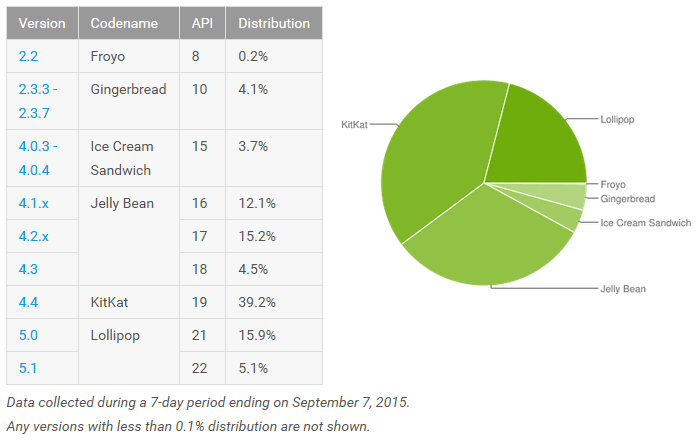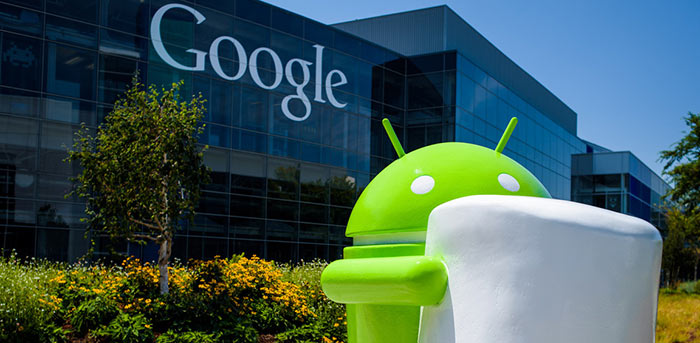Google has just published its latest official figures charting Android device characteristics including OS versions and screen sizes. According to its own data, gathered via Google Play Store app usage, the Lollipop OS (v5.0 and 5.1) is now installed on 21 per cent of Android devices. The Lollipop OS debuted on the Nexus 9 tablet around 10 months ago. The follow-up, Android Marshmallow, which was first revealed at Google I/O this May, is expected to be launched within weeks.

Whether gaining adoption on just over 20 per cent of Android devices in approximately 10 months is an achievement to boast about is open to argument. Google's figures ignore those with v2.1 or earlier versions of Android and those without Google Play Services (Amazon Fire devices and many Chinese 'droids).

The Lollipop install figures are still dwarfed by those who use Android 4.X, these devices add up to nearly 75 per cent in total. Split chronologically, Ice Cream Sandwich accounts for 3.7 per cent, Jelly Bean for 31.8 per cent and KitKat for 39.2 per cent.
For those Android device owners who do get offered an OS upgrade by the device makers/networks the chance to go Lollipop isn't always eagerly grasped. The last Android smartphone I owned was the Samsung Galaxy Note 3 which I could have updated to Lollipop but avoided doing so due to lots of performance and reliability problems being reported with the update. The problems were quite widespread and involved freezing, fast power drain, overheating and general lag / slow performance following the update but those weren't the only problems. Marshmallow won't be coming to the Note 3 via official Samsung channels.

In related Android news today, the Play Store v5.9 app appears to have begun preparation for Android 6.0 with support for fingerprint readers, uninstall managers and more features.













